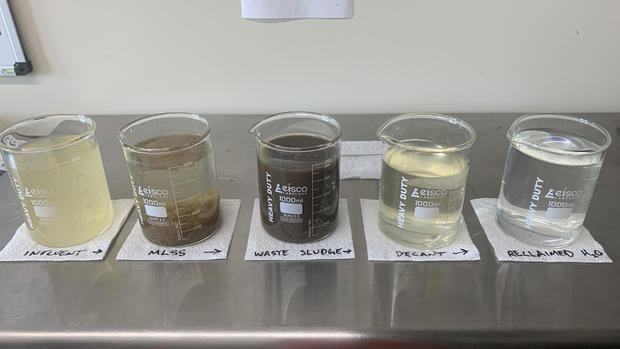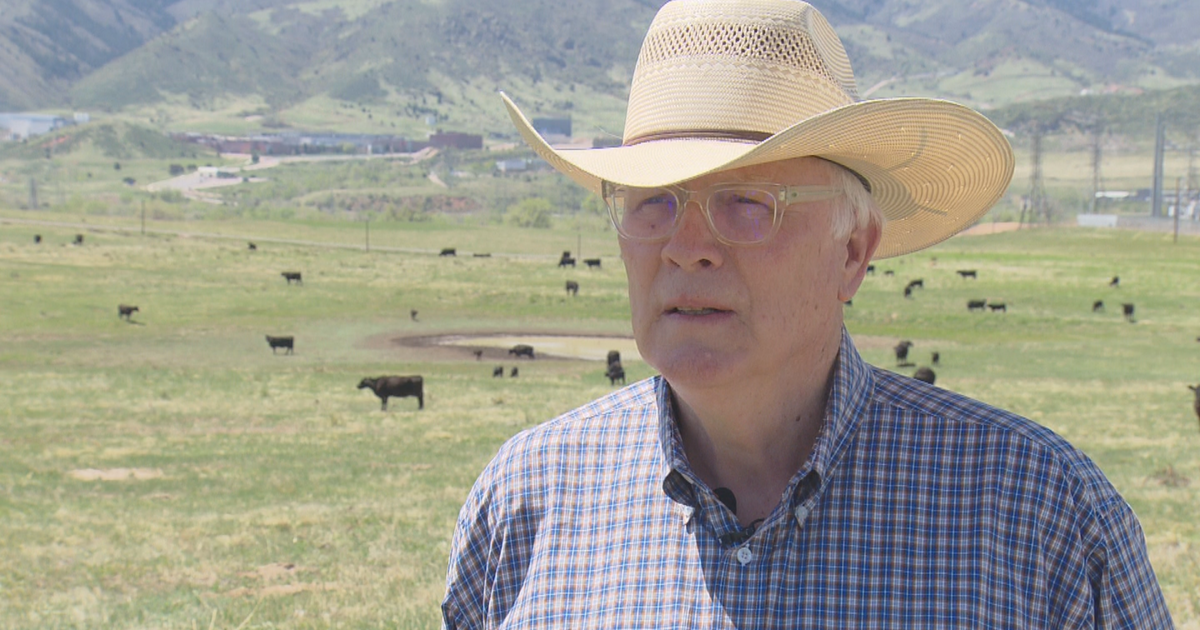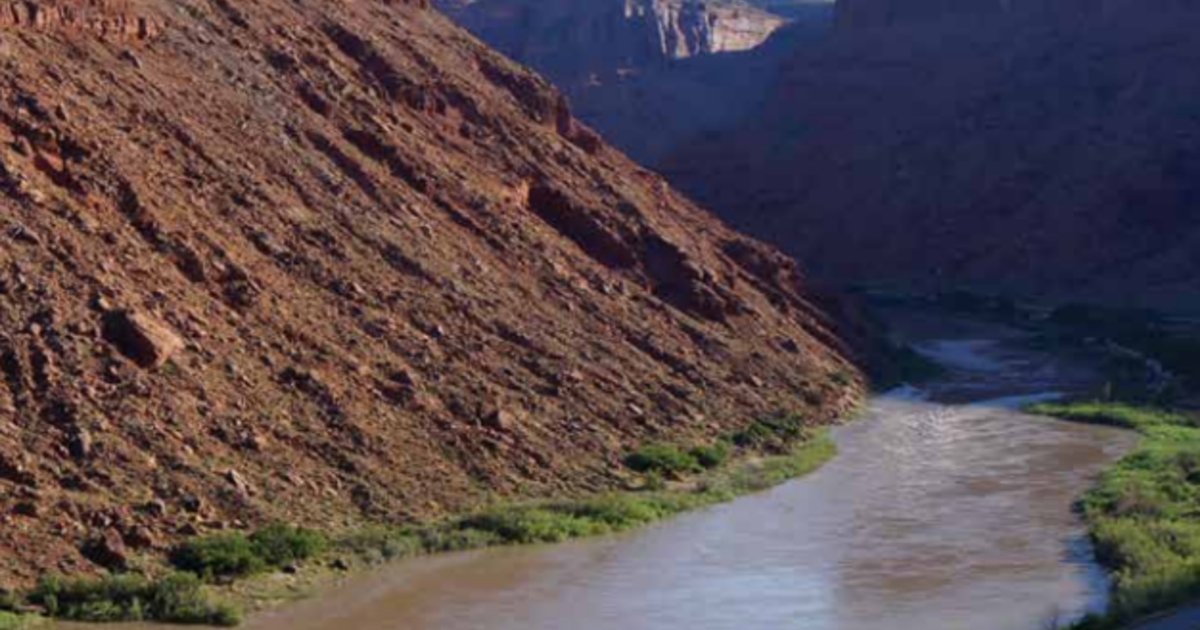A new Arapahoe County neighborhood recycling its sewage could serve as a model for future water preservation
As Arapahoe County grapples with how to ensure sufficient water supplies for a projected growth of 300,000 new residents by 2050, one new developing neighborhood in the county could provide a model for innovative water conservation methods.
That community is Sky Ranch. It's a 770-acre master plan neighborhood just east of the E-470 and I-70 interchange in Arapahoe County, and it recycles 100% of its water. The community is about 25% developed so far and expects about 9,600 people to call it home upon completion in a few years.
Tucked inside the community, just downhill from the neighborhood's 600 currently occupied houses, sits the unique water recycling facility that even most of the neighborhood's new residents haven't heard about.
"We are a zero-discharging facility, we reuse all of our water, according to the state regulations," says Scott Lehman, one of the engineers running the water reclamation facility.
The facility first conditions the community's raw sewage and wastewater by filtering out any sticks or debris. That filtered sewage is then sent to large tanks filled with microscopic bugs to eat away contaminants.
"Just like your microbiome in your body, you're outnumbered 10 to one by bacteria compared to human cells, we probably have a density of a million bugs per milliliter of water in this," Lehman explains.
The reclaimed water is treated with an additional chlorine disinfectant. The entire process is standard with most wastewater treatment facilities across the country, but what sets Sky Ranch's facility apart is that instead of discharging that cleaned wastewater into a river, stream, or elsewhere, the water is reused to irrigate the community's open spaces and agriculture.
Purple signs throughout Sky Ranch's parks warn residents the water is not technically graded for drinking.
Asked if it could be consumed safely, Lehman says it's clean enough that "if it were the only source of water, I would not have a qualm about it."
The community is being developed by Pure Cycle, a publicly-traded company that is designing both the land and water use infrastructure in the neighborhood — something that is usually done by separate entities. The community's drinking water supplies are serviced by the Rangeview Metropolitan District, which is linked to Pure Cycle.
"What we've done is really partnered with the county, and really take water to the next level," says Mark Harding, President and CEO of Pure Cycle.
Harding says the neighborhood also received special dispensation to install turf lawns on the front yards of some of the community's homes, and they're installing other measures inside the new homes to ensure residents use less water from the get-go.
"Dating back 10 years ago, a single-family home used as much as a half an acre foot of water, what we're seeing here is that demand is coming down to about .25," Harding says.
At the end of the day, Harding feels the best way to evolve is by water preservation methods, like recycling wastewater, rather than only water conservation efforts, like a turf lawn or water-efficient appliance.
The community currently has zoning approval for 3,404 residential units and two million square feet of office and retail uses. The neighborhood's first school is set to open in August.
Arapahoe County expects 900,000 residents by 2050. A new study aims to find untapped water underground to service all those people.
Arapahoe County leaders have their eyes on Sky Ranch right now, as the county braces to be home to a total of approximately 900,000 people in the next 30 years.
County leaders recently secured funding to pay a group of researchers nearly $500,000 to study the county's future water availability. The study aims to answer one fundamental question: how much growth is possible with a limited water supply?
The study is something officials in the county's public works department have wanted to do for a few years, but haven't been able to afford until now.
County officials received a state grant from the Colorado Water Commission of $125,000 and a federal grant from the American Rescue Plan for $300,000 to pay for the study. County commissioners also voted to approve the use of $163,000 in county tax dollars to fund the remainder of the project. Officials say any leftover tax dollars that aren't spent on the study will go back to the county's general fund.
Bryan Weimer, Arapahoe County Public Works and Development Director says the county wouldn't have been able to pay for the study without that grant money.
"We're really excited to have this study going on," Weimer says. "We want to be responsible with how we manage growth in a sustainable manner, and this study will help us do that."
The study will take more than a year to complete. A team of researchers with two private firms — Forsgren Associates and LRE Water — are using computer mapping tools to analyze underground aquifers in the Denver Basin to discover previously hidden water supplies.
Will Koger, Vice President of Forsgren Associates, says while some of the aquifers that feed some of the county's water supplies seemed to have dried up, some of those aquifers may not have been drilled deep enough when they were first drilled years — or even decades — ago, and there may still be more water waiting below.
But to re-drill those aquifers can be expensive.
"I believe there's always going to be enough water, the issue is how much of a cost is going to be added," Koger explains. "Some of the water that was easy to develop has already been developed, and so the water that we're now looking at is maybe at a higher increment of cost, but it is there."
The study will help inform a number of future water policies at the county level, from landscaping issues like turf lawns to the circumstances required to approve new building requests for more businesses and neighborhoods.
The county is even considering a requirement that new developments must show proof of 300 years of water security for the buildings planned, instead of the current requirement of 200 years — something some other Colorado counties have already done.
"When a developer comes into the county, they have to show that with that development, they would have enough water to serve that development for enough period of time," Weimer says. "Water is one of the most important — if not the most important — things for development and growth in the county."
While the study won't be completed until May 2024, the county will have several free, open public meetings over the next few months to inform residents about any new findings and obtain community input about any possible policy changes.
For more information about the county's water supply study, click here.
To receive information on the progress of the study and how to attend those meetings, fill out the county's form by clicking here.







